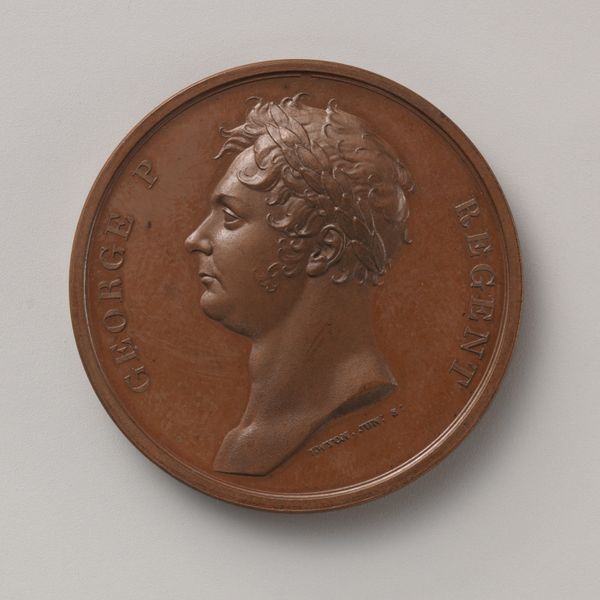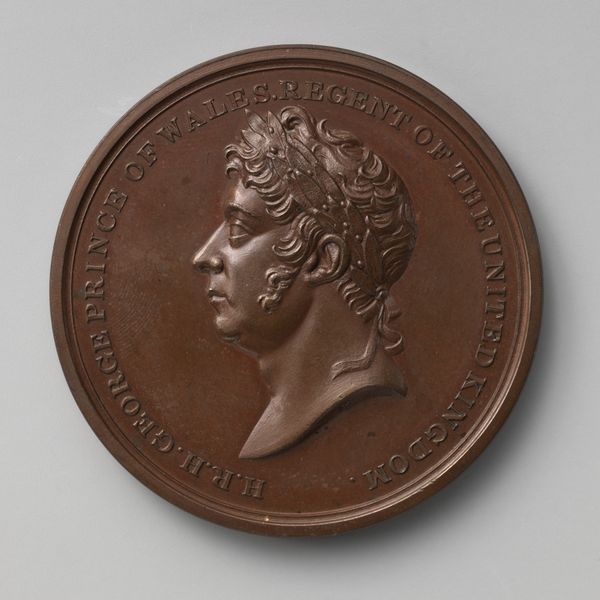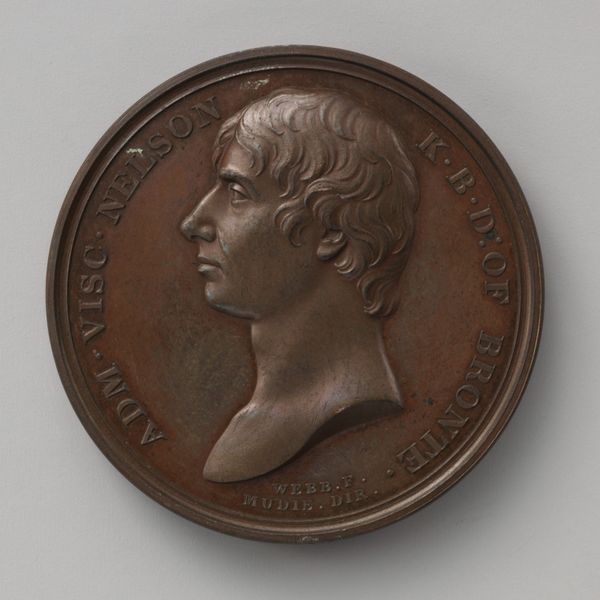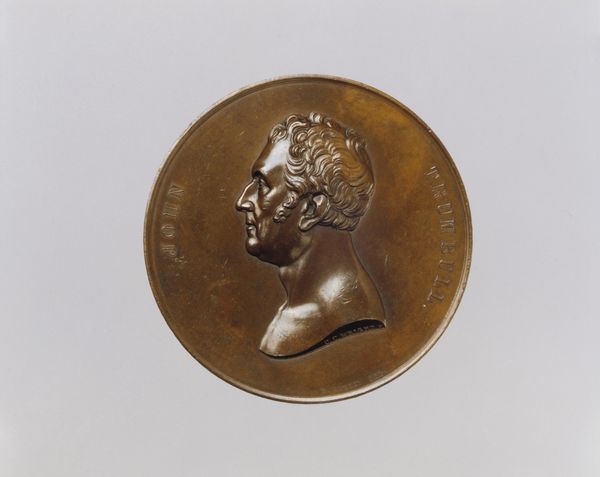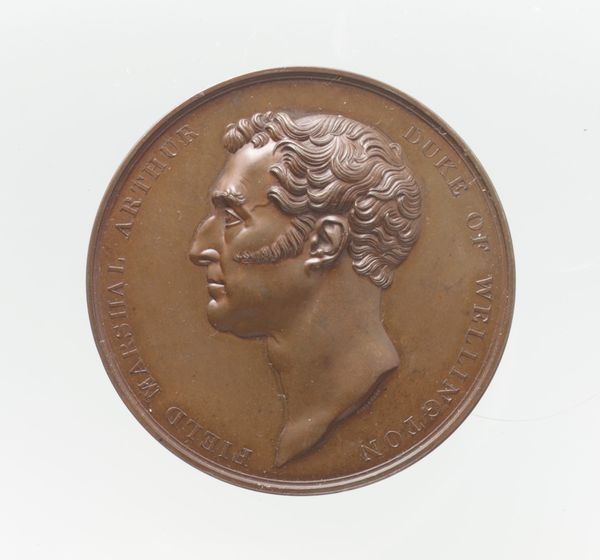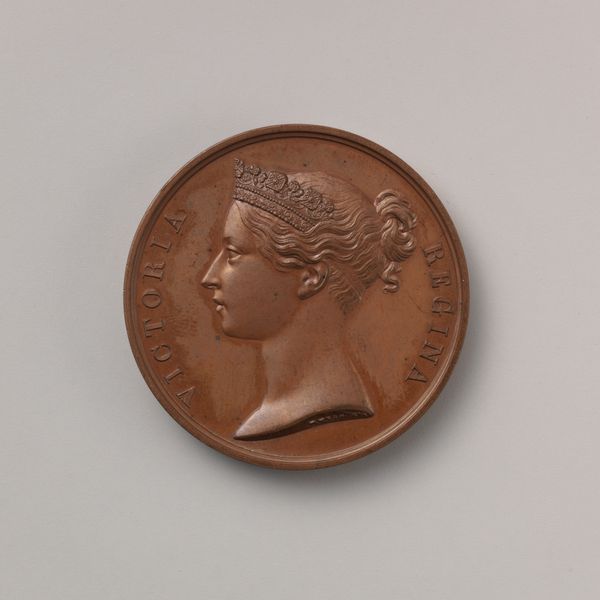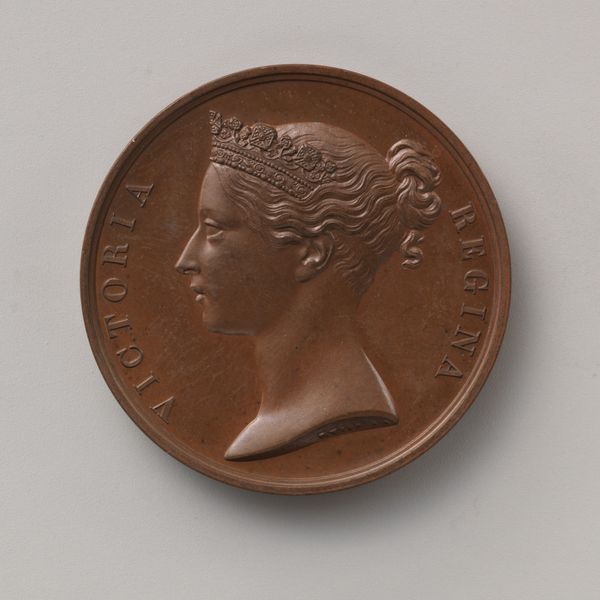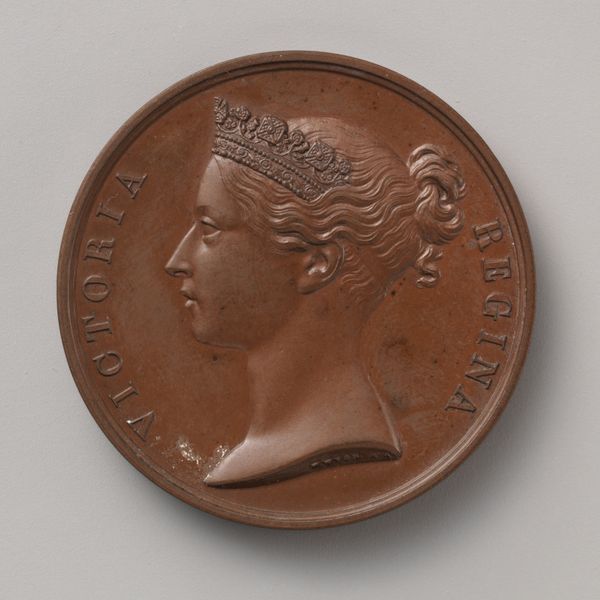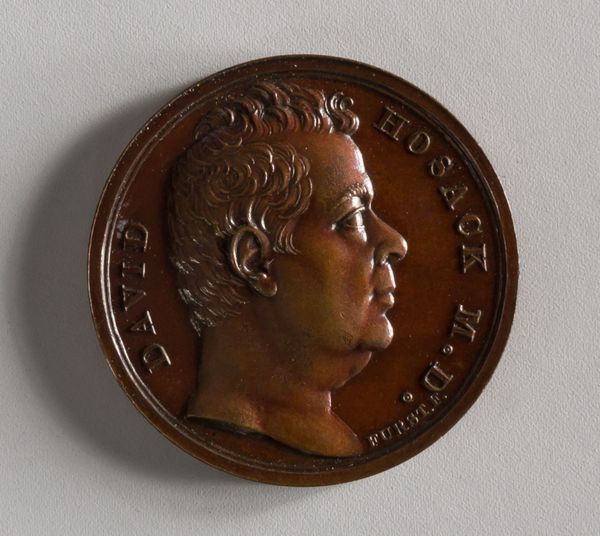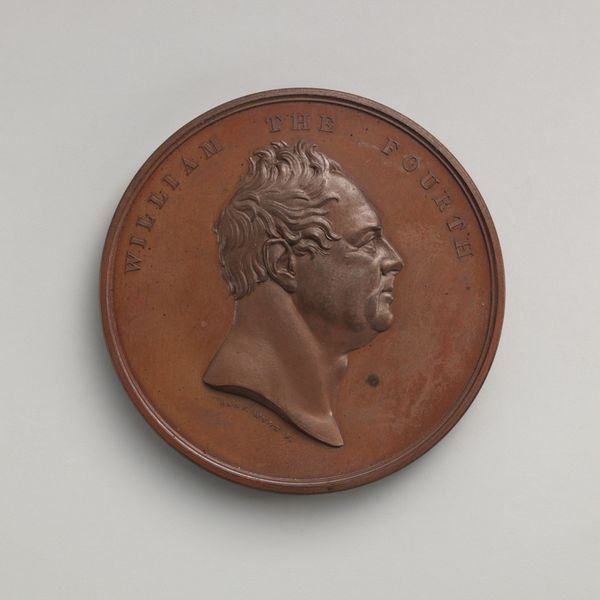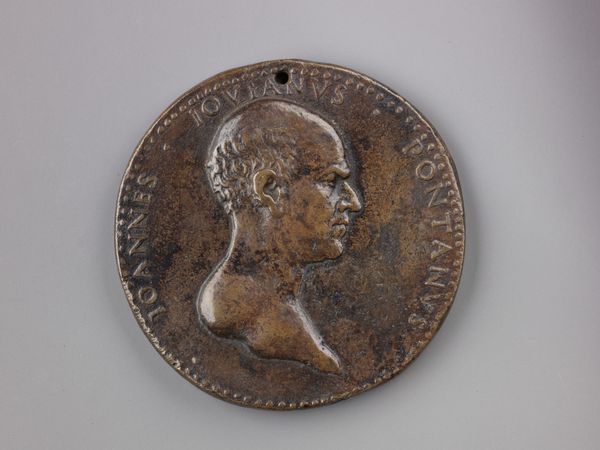
Charge of the British Calvary at Waterloo, led by Lord Uxbridge (afterwards Marquis of Anglesey) 1815
0:00
0:00
bronze, sculpture
#
portrait
#
neoclacissism
#
sculpture
#
bronze
#
sculpture
#
men
#
profile
Dimensions: Diameter: 1 5/8 in. (41 mm)
Copyright: Public Domain
Curator: This bronze relief presents a profile of Henry William, Marquis of Anglesey, sculpted by Alexis Joseph Depaulis around 1815. It memorializes the man who led the charge of the British cavalry at Waterloo. Editor: Bronze… Immediately, I get this feeling of something old and strong. Like those museum doors, weighty with stories. There’s something dignified about this guy, but is that the metal doing the work? Curator: Well, bronze itself was definitely linked to power and status. Think of the massive effort, extracting copper and tin. This wasn’t mass-produced trinkets; it’s about underscoring Anglelsey’s importance. Neoclassicism in particular employed bronze to establish itself in classical precedent, associating itself with empire. Editor: Empire... right. That stern jawline certainly reinforces that. Almost a caricature, in its stiffness. Look at the lettering, though. It's carefully spaced but quite conventional. Curator: Depaulis mass-produced medallions. This specific medal design commemorates an important historical event – the Battle of Waterloo. Its value isn't as unique art object as much as artifact, reflecting the politics of production and the demand of historical momentos. Editor: You can’t deny though, the bronze adds depth. See how the light catches that prominent nose? It almost creates its own drama. It’s a moment captured in a material with permanence, practically demanding it be taken seriously. Curator: Right, it is an artifact invested with the semiotics of power: from the physical demands of the base components to the distribution of national heroes, these objects tell as much about who had it made than who it depicts. Editor: So while our Marquis stares stonily into the middle distance, his bronze skin speaks of empire, mass-production, and the human desire to hold onto important memories. Quite the multi-layered portrait!
Comments
No comments
Be the first to comment and join the conversation on the ultimate creative platform.
